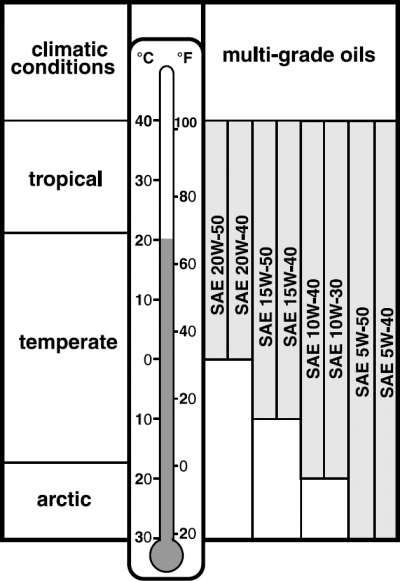Operation of the Rotax under very cold conditions
… does not occur very often in our latitudes.
However, if you are planning a trip to a colder climate zone, there are a few things to bear in mind.
 First of all, there is the selection of the engine oil and the viscosity (see image).
First of all, there is the selection of the engine oil and the viscosity (see image).
If the starter is to crank the engine even in extremely cold conditions, an engine oil that is as thin as possible at this temperature is more than helpful. On the other hand, the oil naturally becomes quite thin at high oil temperatures and may lead to reduced oil pressure. But that's another topic.
What does Rotax say about this ?
… the question is easily answered.
If you look in the OPERATORS MANUAL you can read:
Engine start, operating temperature
Max. 50 °C (120 °F) (ambient temperature)
Min. -25 °C (-13 °F) (oil temperature)
However, there is nothing about running the Rotax. You don't need to, because you should only start the plane when the oil temperature has reached 50°C.
If you follow the specifications, the engine should not be started below an oil temperature of -25°C.
However, this does not mean that it should not be warmed up to this temperature before starting. There was a DIY suggestion for this in the ulForum.
It is also important to ensure that the oil reservoir is also warmed up, as otherwise the flow rate of the oil drawn in by the oil pump may be too low when starting, resulting in a loss of oil pressure due to the engine oil being too viscous.
Problems will then continue to occur when warming up, which then takes forever.
Further problems may occur during the flight. The oil temperature may drop significantly.
The only thing that can help here is to ensure appropriate temperatures under the cowling, possibly insulate the oil tank and install thermostats for the engine oil and coolant.
However, before you close or tape off air inlets, you should first check the temperature conditions.
A radio thermometer, for example, which can be mounted under the cowling without a fixed installation, would be suitable for this.
… something like this for example - inexpensive and even with datalogging…
What do the engine components say about the low temperatures and what other problems can there be?
Here we have possible carburetor icing or ausfallende SMD-Module of the ignition system.
Apart from that, I haven't heard anything else apart from frozen fingers…